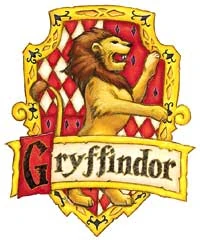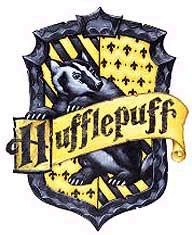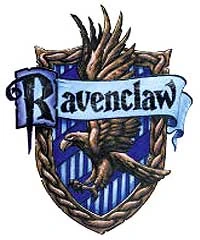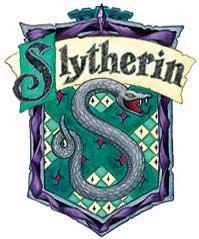Can I Take the House Placement Again on Pottermore
- "The four Houses are called Gryffindor, Hufflepuff, Ravenclaw, and Slytherin. Each House has its own noble history and each has produced outstanding witches and wizards. While you are at Hogwarts, your triumphs will earn your House points, while any rule breaking will lose House points. At the end of the year, the House with the most points is awarded the House Cup, a great honour. I hope each of you will be a credit to whichever House becomes yours."
- — Minerva McGonagall to first-year students on 1 September 1991, shortly before the Sorting Ceremony[src]
Hogwarts School of Witchcraft and Wizardry was divided into four Houses: Gryffindor, founded by Godric Gryffindor; Hufflepuff, founded by Helga Hufflepuff; Ravenclaw, founded by Rowena Ravenclaw; and Slytherin, founded by Salazar Slytherin.[1]
House systems
Houses at Hogwarts were both the living and learning communities for its students. Each year's group of students in the same House shared the same dormitory and many classes. The houses competed throughout the school year, by earning and losing points for behaviour. The House with the most points won the House Cup. Each House also had its own Quidditch team that competed for the Inter-House Quidditch Cup. These two competitions bred rivalries between the Houses, the greatest of which was that between Gryffindor and Slytherin.[4]
Sorting
In the early days of Hogwarts, the four founders handpicked students for their Houses. When the founders worried how students would be selected after their deaths, Godric Gryffindor took his hat off and each "put some brains" in it, creating the Sorting Hat to choose future students for each House.[11] At the beginning of each school year, the magical Sorting Hat was placed on each new student's head during the Sorting Ceremony.[4]

The Sorting Ceremony
The Sorting Hat announced the House the student was to join. Before beginning the Sorting Ceremony, it sang a short song about the founding of the school and the four Houses; the Sorting Hat's songs were different every year, and the Hat was said to take all year composing the next one (according to Ronald Weasley).[4] Every so often it would sing of mortal peril at the school.[12] The students said that it picked up tips from Dumbledore's office.[10]
Qualities
- "It is our choices, Harry, that show us who we truly are, far more than our abilities."
- — Albus Dumbledore[src]
It is unclear if the Sorting Hat tended to place students based on qualities they valued or rather qualities they exhibited. One example of the former is Peter Pettigrew, who was sorted into Gryffindor but ultimately turned out to be quite cowardly, self-serving and corruptible. He may have been placed there because, at the time, he admired strong, brave individuals like James Potter and Sirius Black. Other examples include Vincent Crabbe and Gregory Goyle, who despite being stupid and rather lazy, were placed in Slytherin, the House of the cunning and ambitious. They flocked around Draco Malfoy, who they admired and who exhibited the traits of Slytherin. Hermione Granger, while more than clever enough for Ravenclaw, valued courage above all, and was sorted into Gryffindor, a House she said sounded "by far the best".
The Sorting Hat could detect nascent qualities in a student and place them in the House that would challenge them and put their character to the test. Case in point, Neville Longbottom was sorted into Gryffindor because the Hat sensed that he was capable of demonstrating bravery and leadership during his time at Hogwarts.[4] [13] However, these qualities did not fully surface until Neville learned to believe in himself.
The Hat also appeared to take the students' wishes into account, considering how one's personal choices are very much of a reflection of the qualities that they valued in themselves.[4] Just because someone was placed in a certain House did not mean that they could not display characteristics of other Houses. Harry Potter, for instance, embodied many of the traits that were approved and appreciated by Salazar Slytherin. He was clever, resourceful and cunning, yet the Sorting Hat made him a Gryffindor because the very fact that he asked not to be in Slytherin showed that he did not belong there. A true Slytherin would not have had any doubts about whether or not it was the right House for them.[14]
One of the biggest examples of this was Severus Snape. At one point, Albus Dumbledore observed that his loyal, courageous nature was much more befitted to Gryffindor. However, as a child, Snape's sadism, disdain for Muggles, and sheer cunning and ambition may have led to his being sorted into Slytherin when he first came to Hogwarts.[15]
House dynamics
The four Houses were rather separate entities. Each had its own common room and dormitory, its own table in the Great Hall, and students mostly shared lessons with classmates of their same House. There was no rule against students from different houses mingling, but in practice, a good majority of social interactions occurred within the same house. Each house had one teacher who acted as its Head of House. Each House also had a House ghost. The function they served (if any) was unknown, although they may have been like House mascots. Each Head of House and House ghost was previously a pupil within that House.[16] [4]
A great deal of rivalry existed between the Houses, not always friendly. This rivalry was demonstrated in the Quidditch matches and the annual school competition for the House Cup, which was determined by the number of points earned or lost by each member of the rival Houses.[4] [17] These points were awarded or taken based on students' conduct throughout the school year. All members of the faculty, Prefects, Head Boys and Girls had the authority to grant and deduct points as they saw fit in each instance.[18] Some, like Severus Snape, the former Potions master, tended to favour their own house,[5] but that did not seem to be against the rules. He was despised by many students, other than those in Slytherin, where he was very popular.[19] [20]
It was not known how much favouritism the Hufflepuff and Ravenclaw Heads showed, although it can be deduced that it was minimal or non-existent, as both Professor Filius Flitwick, Head of Ravenclaw, and Professor Pomona Sprout, Head of Hufflepuff, were kind, lighthearted people, who obviously wanted to win the House and Quidditch Cups but were not as vindictive as Snape in going about it. It is known that Professor Minerva McGonagall, the stern head of Gryffindor, did not show much favouritism towards her House.[5] In fact, she deducted 50 points apiece and awarded detentions to three students in her House (Harry Potter, Hermione Granger, and Neville Longbottom when they were caught out of bed after hours in Harry's first year),[21] and supported Professor Snape wholeheartedly in giving Harry detentions for the rest of the school year, even on overlapping Quidditch matches, after Harry used the Sectumsempra curse on Draco Malfoy in Harry's sixth year.[22]
According to Rubeus Hagrid, "there's not a single witch or wizard who went bad who wasn't in Slytherin",[23] (though this was, for the most part correct, there were a few exceptions, former Gryffindor Peter Pettigrew the most notable of them). None of this necessarily meant, however, that all Slytherins were evil, such as Horace Slughorn,[8] Regulus Black,[24] Andromeda Black,[8] Leta Lestrange, Merlin and Narcissa Malfoy[25] for example. Slytherins were chosen for their cunning and ambition.[4] Although founder Salazar Slytherin favoured pure-blood students,[1] [12] it was not a condition of being sorted into Slytherin House as Tom Riddle[26], Dolores Umbridge and Snape[27] were half-blood Slytherins. And there were pure-bloods in other houses such as Sirius Black, the Weasleys, James Potter I, Neville Longbottom (Gryffindor) and Ernest Macmillan (Hufflepuff).
It had also been said that all four Houses must band together and fight as one if Hogwarts was to stand.[12] [28] It must be remembered that all of the Houses had their virtues and flaws; none were inherently good or evil. Slytherins may have earned their reputation as evil, selfish and malicious, because they showed such contempt towards Gryffindor, the often protagonist House. They also did not show much generosity towards other Houses either, whether those in them were pure-blood or not.
House rivalry was mostly seen between Slytherin and Gryffindor,[1] and were said to "loathe each other on principle".[29] This rivalry likely goes back to the days of Godric Gryffindor and Salazar Slytherin after they founded Hogwarts because the Sorting Hat said that they were the best of friends before they founded the school.[12] While it is not clear if there was a similar rivalry between Ravenclaw and Hufflepuff, it seemed fairly unlikely due to the cheerful disposition of the Heads for said Houses, as opposed to the contempt of Professor Snape and the passion of Professor McGonagall. Rowena Ravenclaw and Helga Hufflepuff, however, once great friends, were documented as having had a severe falling out at some point by the Sorting Hat's song in 1995.[12]
It was sometimes thought that there was some dislike between the members of Ravenclaw and Hufflepuff due to the Ravenclaw students' reputation for boasting about their intelligence, which often annoyed Hufflepuffs, who were known for being modest, gentle and kind. As a whole, Gryffindors were thought to get on best with Hufflepuffs, whereas Ravenclaws were thought to be quite friendly with Slytherins. There were certain exceptions, however, such as Harry's friendliness with Cho Chang and Luna Lovegood, both from Ravenclaw, as well as Cho's relationship with Cedric Diggory, a Hufflepuff.
Usually, though not always, the other two Houses appeared (in Harry's eyes) to support Gryffindor in its rivalry with Slytherin,[21] [30] which again is reminiscent of how Slytherin was in the end opposed by all three of the other founders.[1] One exception to this occurred when Ravenclaw, Hufflepuff, and Slytherin all initially supported Hufflepuff's Cedric Diggory instead of Gryffindor's Harry Potter in the Triwizard Tournament.[6] Also in the first Quidditch match of 1996, it was said that many of the Hufflepuffs and Ravenclaws had "taken sides" in the Gryffindor vs Slytherin match, but it was unclear as to what sides they took.
The four Houses of Hogwarts
Gryffindor

Gryffindor valued bravery, daring, nerve, and chivalry.[4] Its emblematic animal was the lion,[3] and its colours were scarlet and gold.[2] Minerva McGonagall was the most recent Head of Gryffindor.[5] Sir Nicholas de Mimsy-Porpington, also known as "Nearly Headless Nick", was the House Ghost. The founder of the House was Godric Gryffindor. Gryffindor corresponded to the element of Fire. The common room was located in one of the highest towers at Hogwarts, the entrance was situated on the seventh floor in the east wing of the castle and was guarded by a portrait of The Fat Lady. She permitted entrance if given the correct password, which was changed numerous times throughout the school year.[4] Famous Gryffindors included Albus Dumbledore, Harry Potter,[4] and Minerva McGonagall.[5]
Hufflepuff

Hufflepuff valued hard work, dedication, patience, loyalty, and fair play.[4] Its emblematic animal was the badger,[3] and yellow and black were its colours. Pomona Sprout was the Head of Hufflepuff during 1991–1998,[6] Sprout left the post of Head of Hufflepuff and Herbology Professor sometime before 2022 and her successor for the position of Head of Hufflepuff was currently unknown. The Fat Friar was its ghost.[4] The founder of the House was Helga Hufflepuff.[1]
Hufflepuff corresponded to the element of earth. The Hufflepuff dormitories and common room were located somewhere in the basement, near the castle's kitchens. It could be accessed by tapping the barrel two from the bottom, middle of the second row in the rhythm of "Helga Hufflepuff" and was described as being a cosy and welcoming place with yellow hangings, fat armchairs, and underground tunnels that led to the dormitories, which had perfectly round doors, similar to barrel tops.[2] Famous Hufflepuffs included Hengist of Woodcroft (founder of Hogsmeade), Newt Scamander (author of Fantastic Beasts and Where to Find Them), and Artemisia Lufkin (first female minister for magic).[2]
Ravenclaw

Ravenclaw valued intelligence, knowledge, curiosity, creativity and wit.[4] Its emblematic animal was the eagle,[3] and its colours were blue and bronze. The Ravenclaw Head of House in the 1990s was Filius Flitwick.[7] The ghost of Ravenclaw was the Grey Lady,[4] who was the daughter of Rowena Ravenclaw, the House's founder.[31] Ravenclaw corresponded to the element of air. The Ravenclaw common room and dormitories were located in a tower on the west side of the castle. Ravenclaw students must answer a riddle as opposed to giving a password to enter their dormitories.[9] This riddle, however, could be answered by non-Ravenclaws. Famous Ravenclaws included Luna Lovegood, Gilderoy Lockhart, Ignatia Wildsmith (inventor of Floo powder), and Garrick Ollivander.[2]
Slytherin

Slytherin valued ambition, leadership, self-preservation, cunning and resourcefulness[4] and was founded by Salazar Slytherin.[1] Its emblematic animal was the serpent,[3] and its colours were emerald green and silver.[2] Professor Horace Slughorn was the Head of Slytherin during the 1997–1998 school year, replacing Severus Snape, who as well replaced Slughorn as Potions Professor when he retired for the first time several years prior.[8] [7] Slytherin had produced the most Death Eaters and Dark Wizards,[23] [32] [33] including Tom Riddle,[26] Bellatrix Lestrange and Lucius Malfoy, for example. But that does not mean that other Houses hadn't produced any; Peter Pettigrew was a Gryffindor, and Quirinus Quirrell was a Ravenclaw.
The Bloody Baron was the House ghost.[4] The founder of the House was Salazar Slytherin.[1] Slytherin corresponded roughly to the element of water. The Slytherin dormitories and common room were reached through a bare stone wall in the Dungeons. The Slytherin common room lay beneath the Black Lake. It was a long, low underground room with rough stone walls and silver lamps hanging from the ceiling.[10] Famous Slytherins included Merlin, Tom Riddle, Draco Malfoy, and Dolores Umbridge.[2]
See also
- Hogwarts founders
Behind the scenes
- Each House represents one of the four classical elements: Fire (Gryffindor), Earth (Hufflepuff), Air (Ravenclaw), and Water (Slytherin). Each of these also represents one of the four states of matter: Plasma (Fire, Gryffindor), Gas (Air, Ravenclaw), Liquid (Water, Slytherin), and Solid (Earth, Hufflepuff).
Appearances
- Harry Potter and the Philosopher's Stone (First appearance)
- Harry Potter and the Philosopher's Stone (film)
- Harry Potter and the Philosopher's Stone (video game)
- Harry Potter and the Chamber of Secrets
- Harry Potter and the Chamber of Secrets (film)
- Harry Potter and the Chamber of Secrets (video game)
- Harry Potter and the Prisoner of Azkaban
- Harry Potter and the Prisoner of Azkaban (film)
- Harry Potter and the Prisoner of Azkaban (video game)
- Harry Potter and the Goblet of Fire
- Harry Potter and the Goblet of Fire (film)
- Harry Potter and the Goblet of Fire (video game)
- Harry Potter and the Order of the Phoenix
- Harry Potter and the Order of the Phoenix (film)
- Harry Potter and the Order of the Phoenix (video game)
- Harry Potter and the Half-Blood Prince
- Harry Potter and the Half-Blood Prince (film)
- Harry Potter and the Half-Blood Prince (video game)
- Harry Potter and the Deathly Hallows
- Harry Potter and the Deathly Hallows: Part 1
- Harry Potter and the Deathly Hallows: Part 1 (video game)
- Harry Potter and the Deathly Hallows: Part 2
- Harry Potter and the Deathly Hallows: Part 2 (video game)
- Harry Potter and the Cursed Child
- Harry Potter and the Cursed Child (play)
- Fantastic Beasts and Where to Find Them: The Original Screenplay (Seen on house scarf)
- Fantastic Beasts and Where to Find Them (film) (Seen on house scarf)
- Fantastic Beasts: The Crimes of Grindelwald - The Original Screenplay
- Fantastic Beasts: The Crimes of Grindelwald
- Fantastic Beasts: The Secrets of Dumbledore - The Complete Screenplay
- Fantastic Beasts: The Secrets of Dumbledore
- J. K. Rowling's official site (Mentioned only)
- Pottermore
- Wizarding World
- Harry Potter: Quidditch World Cup
- Harry Potter Trading Card Game
- LEGO Harry Potter
- LEGO Harry Potter: Characters of the Magical World
- LEGO Creator: Harry Potter
- Creator: Harry Potter and the Chamber of Secrets
- LEGO Dimensions
- LEGO Harry Potter: Years 1-4
- LEGO Harry Potter: Years 5-7
- Harry Potter: The Character Vault
- Wonderbook: Book of Spells
- Harry Potter for Kinect
- Fantastic Beasts: Cases from the Wizarding World (Seen on house scarf)
- Harry Potter: Hogwarts Mystery
- Harry Potter: Wizards Unite
- Harry Potter: Puzzles & Spells
- Harry Potter: Magic Awakened
- Hogwarts Legacy
External links
- Interview with J. K. Rowling
Notes and references
- ↑ 1.00 1.01 1.02 1.03 1.04 1.05 1.06 1.07 1.08 1.09 1.10 Harry Potter and the Chamber of Secrets, Chapter 9 (The Writing on the Wall)
- ↑ 2.00 2.01 2.02 2.03 2.04 2.05 2.06 2.07 2.08 2.09 2.10 Pottermore
- ↑ 3.0 3.1 3.2 3.3 3.4 3.5 3.6 3.7 Harry Potter and the Philosopher's Stone, Chapter 3 (The Letters from No One)
- ↑ 4.00 4.01 4.02 4.03 4.04 4.05 4.06 4.07 4.08 4.09 4.10 4.11 4.12 4.13 4.14 4.15 4.16 4.17 4.18 4.19 4.20 4.21 4.22 4.23 4.24 4.25 Harry Potter and the Philosopher's Stone, Chapter 7 (The Sorting Hat)
- ↑ 5.0 5.1 5.2 5.3 5.4 5.5 Harry Potter and the Philosopher's Stone, Chapter 8 (The Potions Master)
- ↑ 6.0 6.1 6.2 Harry Potter and the Goblet of Fire, Chapter 18 (The Weighing of the Wands)
- ↑ 7.0 7.1 7.2 Harry Potter and the Half-Blood Prince, Chapter 29 (The Phoenix Lament)
- ↑ 8.0 8.1 8.2 8.3 Harry Potter and the Half-Blood Prince, Chapter 4 (Horace Slughorn)
- ↑ 9.0 9.1 Harry Potter and the Deathly Hallows, Chapter 29 (The Lost Diadem)
- ↑ 10.0 10.1 10.2 Harry Potter and the Chamber of Secrets, Chapter 12 (The Polyjuice Potion)
- ↑ Writing by J. K. Rowling: "The Sorting Hat" atWizarding World
- ↑ 12.0 12.1 12.2 12.3 12.4 Harry Potter and the Order of the Phoenix, Chapter 11 (The Sorting Hat's New Song)
- ↑ Harry Potter and the Philosopher's Stone, Chapter 13 (Nicolas Flamel)
- ↑ Harry Potter and the Chamber of Secrets, Chapter 18 (Dobby's Reward)
- ↑ Harry Potter and the Deathly Hallows, Chapter 33 (The Prince's Tale)
- ↑ Writing by J. K. Rowling: "Hogwarts Ghosts" atWizarding World
- ↑ Harry Potter and the Philosopher's Stone, Chapter 11 (Quidditch)
- ↑ JK Rowling's Official Site (Archived)
- ↑ Harry Potter and the Chamber of Secrets, Chapter 5 (The Whomping Willow)
- ↑ Harry Potter and the Half-Blood Prince, Chapter 8 (Snape Victorious)
- ↑ 21.0 21.1 Harry Potter and the Philosopher's Stone, Chapter 15 (The Forbidden Forest)
- ↑ Harry Potter and the Half-Blood Prince, Chapter 24 (Sectumsempra)
- ↑ 23.0 23.1 Harry Potter and the Philosopher's Stone, Chapter 5 (Diagon Alley)
- ↑ Harry Potter and the Deathly Hallows, Chapter 10 (Kreacher's Tale)
- ↑ Harry Potter and the Deathly Hallows, Chapter 36 (The Flaw in the Plan)
- ↑ 26.0 26.1 Harry Potter and the Chamber of Secrets, Chapter 13 (The Very Secret Diary)
- ↑ Harry Potter and the Half-Blood Prince, Chapter 28 (Flight of the Prince)
- ↑ Harry Potter and the Deathly Hallows, Chapter 30 (The Sacking of Severus Snape)
- ↑ Harry Potter and the Half-Blood Prince, Chapter 7 (The Slug Club) - "Gryffindor and Slytherin students loathed each other on principle."
- ↑ Harry Potter and the Philosopher's Stone, Chapter 17 (The Man with Two Faces)
- ↑ Harry Potter and the Deathly Hallows, Chapter 31 (The Battle of Hogwarts)
- ↑ Harry Potter and the Goblet of Fire, Chapter 27 (Padfoot Returns)
- ↑ Harry Potter and the Half-Blood Prince, Chapter 17 (A Sluggish Memory)
| Hogwarts School of Witchcraft and Wizardry | |||
|---|---|---|---|
| Hogwarts Houses | |||
| | | | |
| Namesake Founders Godric Gryffindor · Helga Hufflepuff · Rowena Ravenclaw · Salazar Slytherin | |||
| Heads of House Minerva McGonagall · Pomona Sprout · Filius Flitwick · Horace Slughorn | |||
| House Ghosts Nearly Headless Nick · Fat Friar · Grey Lady · Bloody Baron | |||
Source: https://harrypotter.fandom.com/wiki/Hogwarts_Houses




0 Response to "Can I Take the House Placement Again on Pottermore"
Post a Comment